Abstract
Numerous studies have suggested that cryptococcal capsular polysaccharide could induce an immunological paralysis. To investigate this possibility, mice were given various concentrations of purified cryptococcal polysaccharide and then 14 days later were challenge-immunized with the same material in Freund's incomplete adjuvant. Anticryptococcal agglutinin titers were determined at various periods after polysaccharide treatment and after challenge immunization. At the same periods the hemolytic plaque technique was used to determine the number of spleen cells capable of producing antibody against cryptococcal polysaccharide. The data indicated that there was a transitory immune response which preceded tolerance induction. In animals given the largest doses of polysaccharide, “in vivo” neutralization was responsible for low serum agglutinin titers during the transitory response. The capsular polysaccharide was considered to have induced immunological unresponsiveness at the highest concentration, because challenge immunization did not stimulate an increase in the number of plaque-forming cells (PFC). A sixfold increase in numbers of PFC was found in animals injected initially with the lowest concentration of polysaccharide. These results support the idea that tolerance was due to terminal differentiation without proliferation of the immunocompetent cells. The central failure of the immune mechanism which was apparent in the paralyzed mice was temporary under the conditions of this experiment.
Full text
PDF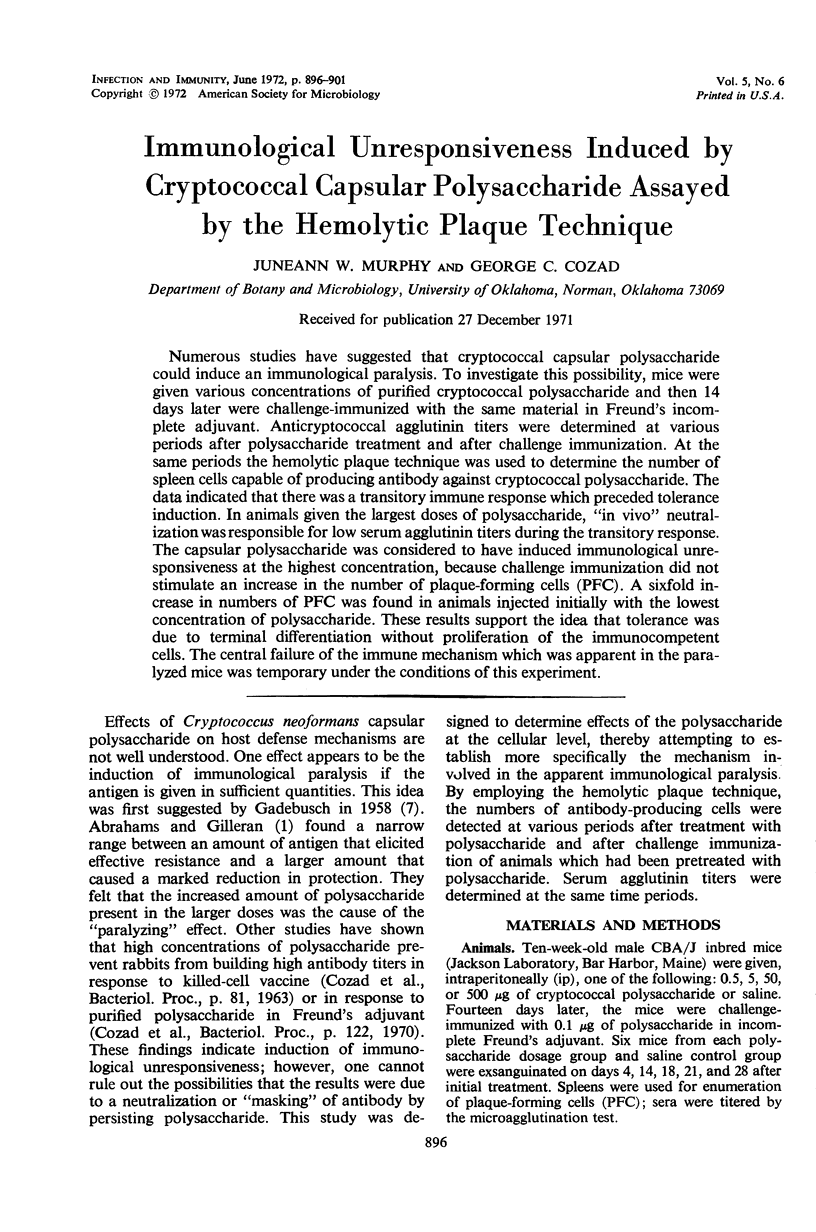
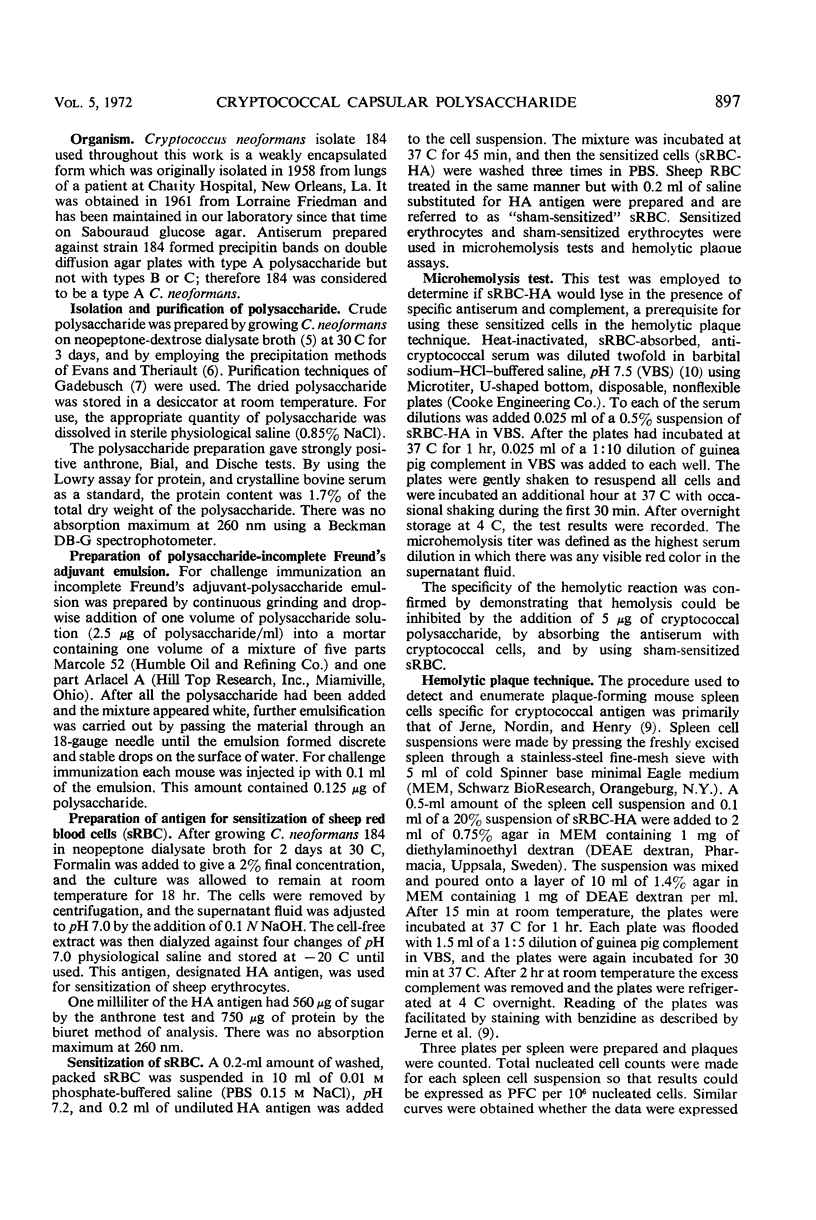
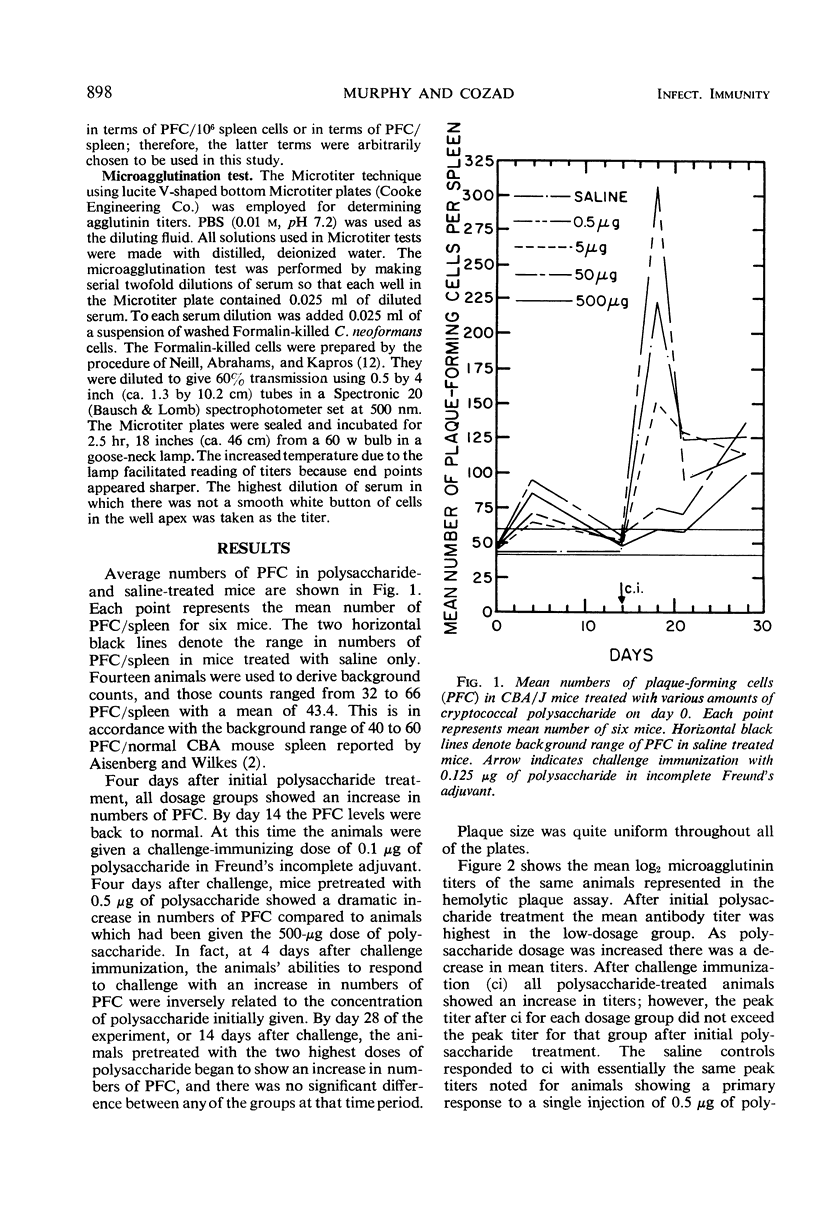
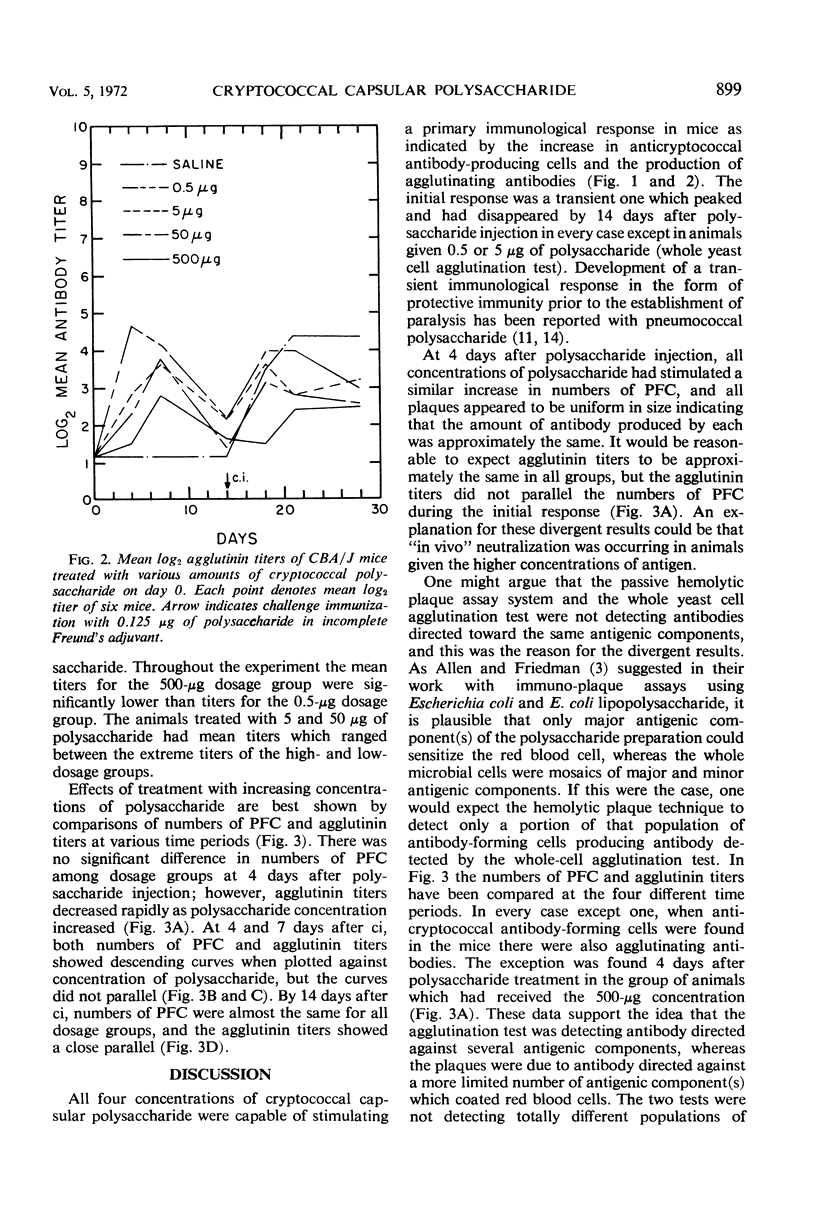
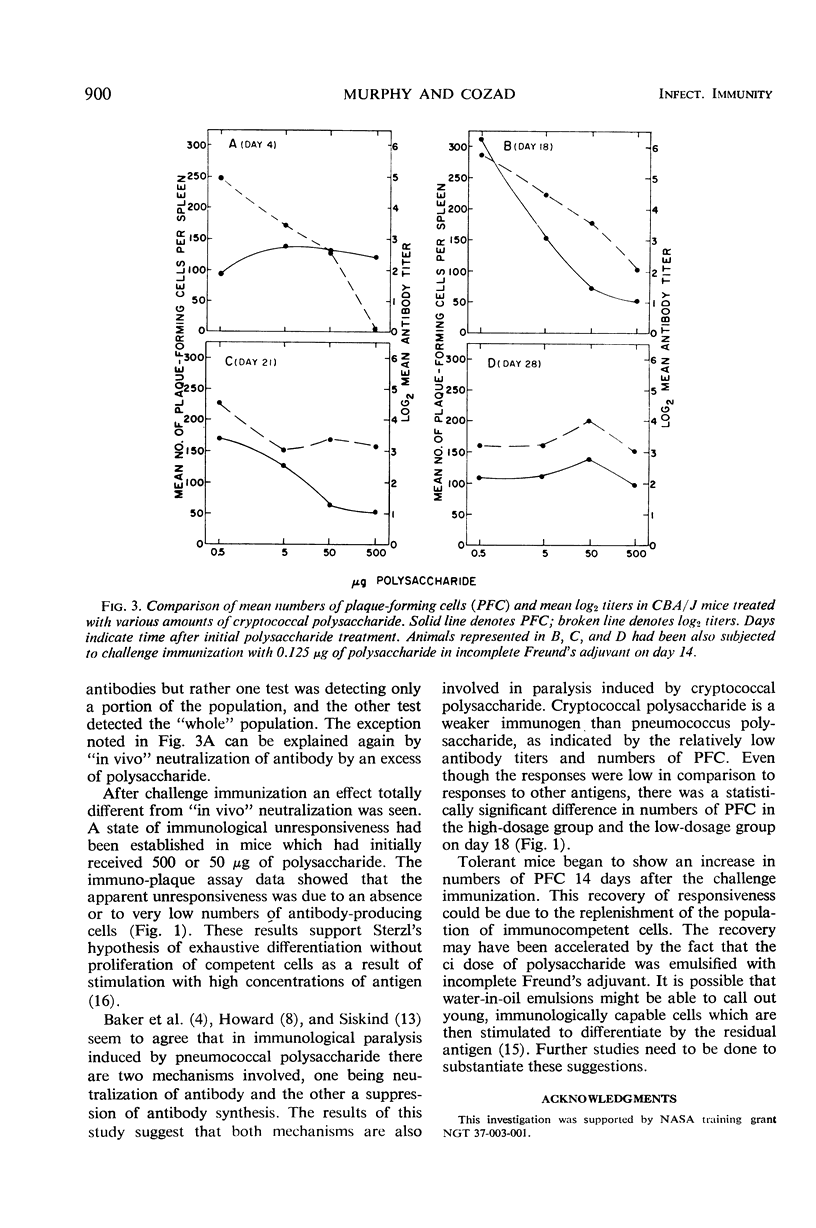
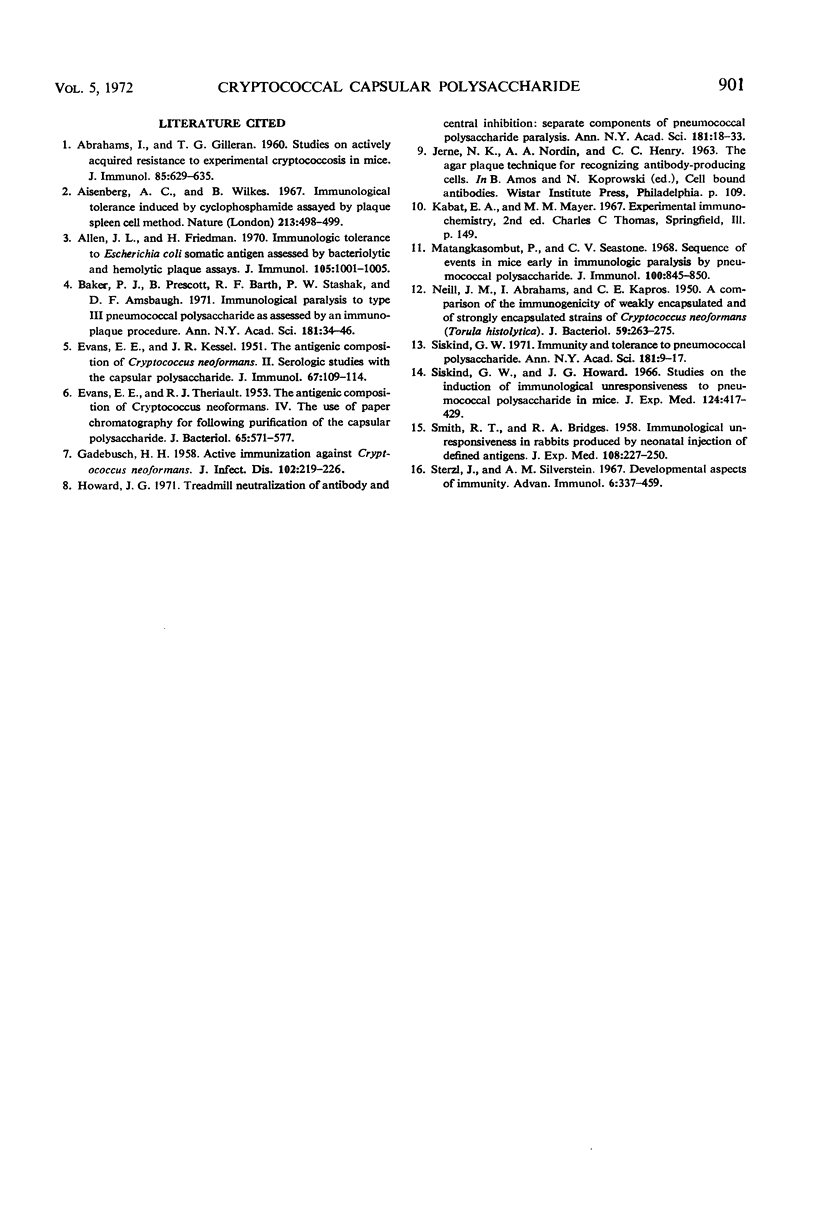
Selected References
These references are in PubMed. This may not be the complete list of references from this article.
- Aisenberg A. C., Wilkes B. Immunological tolerance induced by cyclophosphamide assayed by plaque spleen cell method. Nature. 1967 Feb 4;213(5075):498–499. doi: 10.1038/213498a0. [DOI] [PubMed] [Google Scholar]
- Allen J. L., Friedman H. Immunologic tolerance to Escherichia coli somatic antigen assessed by bacteriolytic and hemolytic plaque assays. J Immunol. 1970 Oct;105(4):1001–1005. [PubMed] [Google Scholar]
- EVANS E. E., KESSEL J. F. The antigenic composition of Cryptococcus neoformans. II. Serologic studies with the capsular polysaccharide. J Immunol. 1951 Aug;67(2):109–114. [PubMed] [Google Scholar]
- EVANS E. E., THERIAULT R. J. The antigenic compostion of Cryptococcus neoformans. IV. The use of paper chromatography for following purification of the capsular polysaccharide. J Bacteriol. 1953 May;65(5):571–577. doi: 10.1128/jb.65.5.571-577.1953. [DOI] [PMC free article] [PubMed] [Google Scholar]
- GADEBUSCH H. H. Active immunization against Cryptococcus neoformans. J Infect Dis. 1958 May-Jun;102(3):219–226. doi: 10.1093/infdis/102.3.219. [DOI] [PubMed] [Google Scholar]
- Matangkasombut P., Seastone C. V. Sequence of events in mice early in immunologic paralysis by pneumococcal polysaccharide. J Immunol. 1968 Apr;100(4):845–850. [PubMed] [Google Scholar]
- NEILL J. M., ABRAHAMS I., KAPROS C. E. A comparison of the immunogenicity of weakly encapsulated and of strongly encapsulated strains of Cryptococcus neoformans (Torula histolytica). J Bacteriol. 1950 Feb;59(2):263–275. doi: 10.1128/jb.59.2.263-275.1950. [DOI] [PMC free article] [PubMed] [Google Scholar]
- SMITH R. T., BRIDGES R. A. Immunological unresponsiveness in rabbits produced by neonatal injection of defined antigens. J Exp Med. 1958 Aug 1;108(2):227–250. doi: 10.1084/jem.108.2.227. [DOI] [PMC free article] [PubMed] [Google Scholar]
- Siskind G. W., Howard J. G. Studies on the induction of immunological unresponsiveness to pneumococcal polysaccharide in mice. J Exp Med. 1966 Sep 1;124(3):417–429. doi: 10.1084/jem.124.3.417. [DOI] [PMC free article] [PubMed] [Google Scholar]
- Sterzl J., Silverstein A. M. Developmental aspects of immunity. Adv Immunol. 1967;6:337–459. doi: 10.1016/s0065-2776(08)60525-8. [DOI] [PubMed] [Google Scholar]


